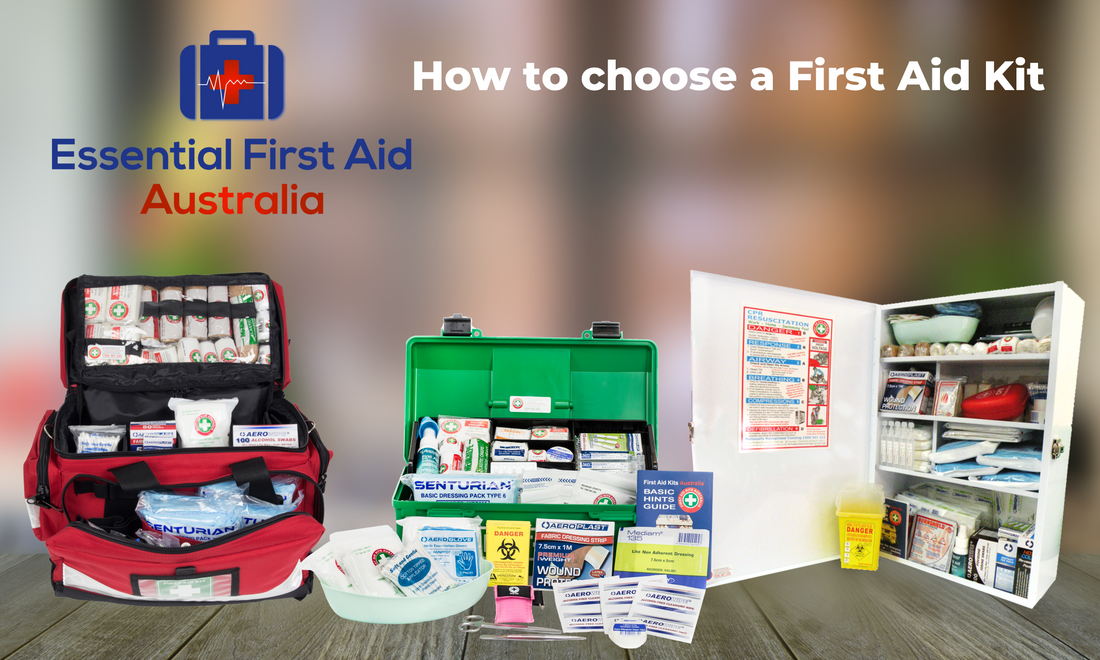
First Aid Kits are an essential part of safety in the workplace - and it's a requirement for compliance. So, if you don't have a First Aid Kit at your office or work, it's really imperative that you get one and we'll share how to choose the right one for you!
When it comes to selecting a First Aid Kit for your workplace, there are important factors to consider. Here's a guide to help you choose the best First Aid Kit for your workplace:
Regulatory approval: It is crucial to ensure that the first aid kit and supplies are registered with the Therapeutic Goods Administration (TGA) for sale in Australia. The TGA requires medical products and devices to have an ARTG number, ensuring their safety and quality standards. With the increasing availability of medical products online, it is important to be cautious about products without proper regulatory approval.
Restocking: The frequency of restocking depends on how often the First Aid Kit is used. It is essential to restock your kit at least once a year and regularly check for expired products. At Essential First Aid Australia, we have refill kits for all the First Aid Kits sold on our website.
Quantity of People: Consider the number of people the kit will serve. For larger sites, it may be necessary to divide the kit into different areas and provide a first aid kit for each area based on the number of people present.
Risk and Common Injuries: Assess the risk level of your workplace based on the type of activities performed and the potential injuries that can occur. Common injuries may include cuts, sprains, strains, bruises, fractures, burns, allergies, bleeding, internal injuries, eye injuries, and bites & stings. Research your industry to determine specific medical supplies required, such as Blue Visual Dressings for the Food Industry.
Emergency Manual: First Aid Kits should include an emergency manual that provides basic first aid information for individuals with no training.
Special Considerations: Consider any additional modules or specific supplies needed for your workplace, such as Eye Wash Stations or Burn Modules. Evaluate whether employees are exposed to corrosive chemicals, flying particles, or flammable liquids.
Prominent and Visible: First Aid Kits should be easily visible and accessible. They should feature a white cross on a green background for quick identification.
Appropriate Outer Case: Choose an outer case that suits the purpose of your First Aid Kit. Consider factors like protection from dust or knocks. Common types of first aid kit cases include soft packs, metal cabinets, and hard plastic.
Choosing the right First Aid Kit for your workplace also involves assessing the risk level. Here's a guide to help identify Risk Levels in the workplace:
Low Risk: Applies to workplaces where the probability of serious injuries requiring first aid treatment is low. Examples include city offices, shops, retail establishments, and co-working spaces in suburban areas.
Moderate Risk Pertains to workplaces where there is a mild risk of accidents. This may include workplaces with machinery, such as warehouses with pallet racking and forklifts.High Risk: Applies to workplaces where accidents are likely unless proper protection measures are in place. High-risk workplaces require additional cover for specific types of work, such as eye injuries, burns, cuts, and fractures. Such workplaces may need additional items based on assessed risks, particularly if they involve chemicals, heavy machinery, cutting tools, or welding equipment.
Remote Areas, Farms, Mine Sites: These locations require separate assessments due to the increased risk resulting from limited access to medical services. First Aid Training and First Aid Rooms are often necessary in such areas.
Once you have your Essential First Aid Kit, it's essential to maintain compliance by keeping it stocked and organized. The restocking frequency depends on the usage and dynamics of your workplace. Restock the kit every couple of weeks if it is frequently used and workers come into contact with dangerous elements. For kits with less frequent usage, restocking can be reduced to once every 6 months or as needed. Additionally, remember to restock the kit after any major use, regardless of frequency.
Modular First Aid Kits offer faster access to emergency supplies and make restocking easier since each module can be checked individually.
Visit our checklist : How to Stock a First Aid Kit
Visit our checklist : How to choose a Refill kit to restock your First Aid Kit.
Shop with us for your compliant First Aid Kit!
www.essentialfirstaidaustralia.com.au
